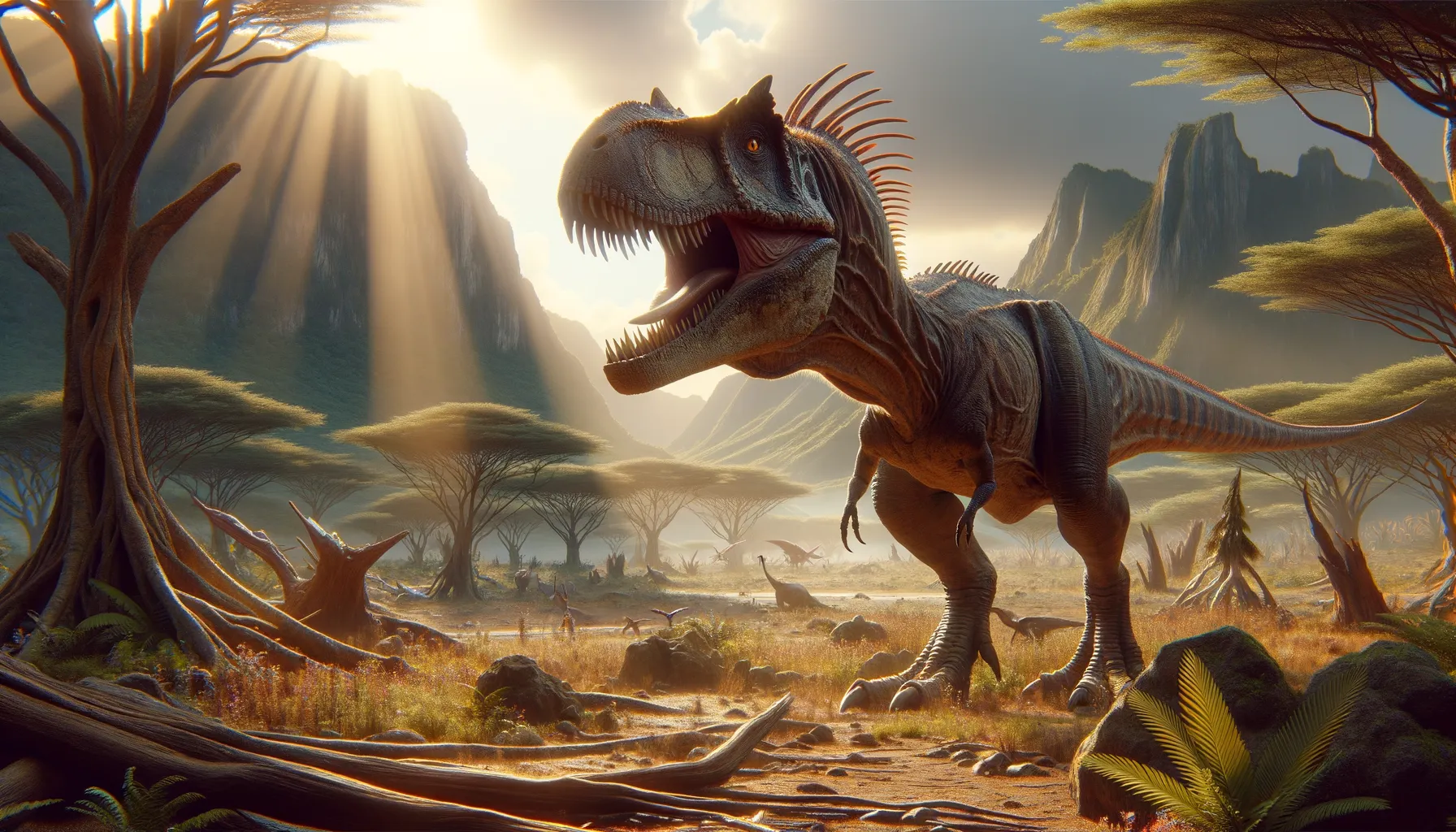
Eocarcharia
The silent predator of the ancient plains.
Period
Cretaceous
Length
Estimated around 25 feet long.
Height
Roughly 6 to 10 feet tall.
Weight
Approximately 1 to 2 tons.
Eocarcharia was a carnivorous dinosaur that roamed what is now Africa during the Early Cretaceous period. Known for its blade-like teeth, it belonged to the carcharodontosaurid family, related to the infamous Carcharodontosaurus. The fossils found suggest it was a formidable predator within its ecosystem. Its discovery has contributed significantly to understanding the diversity and distribution of theropods in Africa during that era.
Diet
This dinosaur was carnivorous, preying primarily on smaller dinosaurs and possibly scavenging for food. Its sharp teeth and powerful jaws were well-suited for consuming flesh.
Hunting
Eocarcharia likely relied on stealth and surprise when hunting, possibly ambushing prey that was smaller and weaker. As a predator, it had to be adept at taking down prey quickly to avoid injury.
Environmental challenges
During its time, Eocarcharia faced competition for food from other predators in the area, which could have influenced its hunting strategies. Seasonal changes might have also affected prey availability, requiring it to adapt its diet. Environmental shifts, such as changes in vegetation, would impact the types and numbers of available prey.
Speed
Likely moderate for a theropod its size.
Lifespan
Estimated around 20 to 30 years.
First discovery
Discovered in Niger, Africa, in the mid-2000s.
Fun Facts
- Eocarcharia lived approximately 112 million years ago during the Early Cretaceous period.
- The name 'Eocarcharia' means 'dawn shark,' a nod to its sharp, serrated teeth that resembled those of a shark.
- Eocarcharia fossils were discovered in the Sahara Desert of Niger, highlighting how different Earth's climate and geography were in the past.
- This predator would have been a formidable hunter, likely preying on the herbivorous dinosaurs of its time.
- Eocarcharia is known from a partial skeleton, but it shares many features with other large theropods, suggesting it was a top predator.
- Though only partially discovered, Eocarcharia's notable skull characteristics suggest it had a powerful bite.
- The discovery of Eocarcharia has helped scientists understand more about dinosaur ecosystems in Africa during the Cretaceous period.
Growth and Development
Young Eocarcharia likely grew quickly to reach a size that could help deter predators and rivals. As they matured, physical changes would include the development of larger, more robust teeth and stronger muscles for hunting. Juvenile Eocarcharia may have stayed close to the areas with abundant resources to ensure survival.
Habitat
Eocarcharia lived in a semi-arid region with enough vegetation to support a variety of herbivorous prey. Water sources would have been crucial for survival, suggesting a habitat near rivers or lakes. The terrain could have included open plains and wooded areas, providing a diverse environment for hunting.
Interaction with other species
As a top predator, Eocarcharia would have had few natural enemies but plenty of competition from other large theropods. It might have competed with other carnivores for the same prey, leading to occasional conflicts. Its presence in the ecosystem would have played a significant role in maintaining a balance among different species.
Natural lifespan
Natural lifespan likely reached up to 30 years.
Reproduction
Eocarcharia likely laid eggs, as evidenced by what we know of theropod reproduction. Nesting sites would have been chosen carefully, possibly concealed to protect from other predators. Parental care is uncertain, but some level of protection for eggs or hatchlings might have been necessary.
Social behaviour
Little is known about its social behavior, but it may have been solitary like many large predators. It could have come together with others of its kind for breeding purposes. Aggressive interactions might have occurred over territory or mates.
Fossil locations
Fossils of Eocarcharia have primarily been located in the Sahara of Niger, Africa, offering key insights into mid-Cretaceous theropod diversity. The discovery was significant in expanding knowledge about dinosaur distribution on the ancient landmass of Gondwana. These fossils help fill the geographic and evolutionary gaps in Africa's dinosaur fauna.
